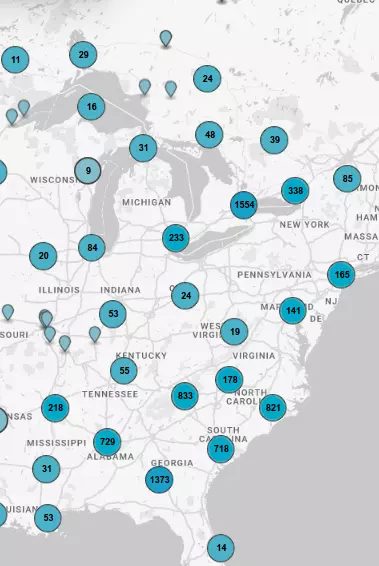Pine Pass - 2,868 Ft. (Sign missing)
Here the great barrier of the Rocky Mountains is breached by the lowest highway pass. Once the remote route of the trapper, it now links the commerce of the north and markets of the south. The...
- british columbia
- canada
Metchosin Schoolhouse
In spring, 1872, classes began in Metchosin Schoolhouse with Mrs. Elizabeth Fisher teaching 7 girls and 3 boys. On land donated by John Witty and with its $300 cost shared equally by...
- british columbia
- canada
A Pioneer Railway (Sign missing)
For a quarter of a century, the wood-burning steam 'locies' of the 'Cordwood Limited' hauled trains throughout the Saanich Peninsula. From 1894 to 1919, the Victoria and Sidney Railway was vital...
- british columbia
- canada
James Sinclair
In 1841, Sinclair guided 200 Red River settlers from Fort Garry through the Rockies to Oregon in an attempt to hold the territory for Great Britain. By 1854 he had recrossed the mountains several...
- british columbia
- canada
The Map Maker (Sign missing)
It was May, 1808, when David Thomson, the 'greatest land geographer', sought a fur-trade route along the opposite shore. Thompson's route became the busy Walla Walla Trail when gold was discovered...
- british columbia
- canada
Spruce Capital
Simon Fraser's men cut the first spruce logs near the junction of the Nechako and Fraser Rivers in 1807 to construct Fort George. Starting near the original fort a century later, Prince...
- british columbia
- canada
Yellowhead Pass
Name after 'Tete Jaune', blond fur trader at Jasper House, this low pass was favoured by Sanford Fleming in his railway surveys of the 1870's. Rejected by the C.P.R., the route was later used by...
- british columbia
- canada
No. 1 Mine
Nanaimo was founded as a coal-mining settlement in 1852. Its most productive mine, No. 1, opened in 1881. From the bottom of the main shaft, one-half mile south of here, a labyrinth of...
- british columbia
- canada
Point Ellice House
This historic residence, built in 1861, was the home of the Honourable Peter O'Reilly. As Gold Commissioner, County Court Judge and member of the first Legislative Council of British Columbia,...
- british columbia
- canada
Cariboo Wagon Road (Sign missing)
It was one of the most difficult construction jobs in the British Empire, but the colony needed this road to the Cariboo goldfields. From 1861 to 1863 the small body of Royal Engineers sent...
- british columbia
- canada
Britannia Mine
From 1930-35, these mines were the British Empire's largest producers of copper. Originally prospected by Dr. A.A. Forbes in 1888, the ores of the Britannia Range were first staked in 1897...
- british columbia
- canada
Wellington
In 1869 Robert Dunsmuir discovered coal in this area. The settlement of Wellington developed after 1871 when coal was transported first by wagon and later by rail to the wharves at Departure...
- british columbia
- canada
Coldstream Valley
The valley's potential was seen by Forbes and Charles Vernon in 1863, when travelling to silver claim staking 40 miles to the east. In 1864, the brothers pre-empted across the lake 1000...
- british columbia
- canada
B.C. Paper Manufacturing Co. (Sign missing)
The first paper mill in BC was built on the Somass River in 1894. The small water-powered plant was able to produce 50 tons of paper a day using rags, rope and ferns as raw material....
- british columbia
- canada
Wharf Street (Sign missing)
From a muddy trail fronting Fort Victoria's palisades, this street changed with the maturing city. In the 1850's, Hudson's Bay Co. ships loaded firs while moored to the shore. In the 1860's, gold...
- british columbia
- canada
Engineers' Road
A wagon road across B.C. - this was the ambitious scheme of the Royal Engineers in 1860 as miners clamored for better access to the Southern Interior. Sent from England, these military engineers...
- british columbia
- canada
Government House (Sign missing)
The official residence of Colonel R.C. Moody, R.E., was built near this site in 1859. In 1864 it was altered to become the Government House of the Mainland Colony of British Columbia and was...
- british columbia
- canada
O'Keefe Ranch
One of the earliest cattle empires in the Okanagan began in 1867 when Cornelius O'Keefe and Thomas Greenhow drove cattle from Oregon to the north end of Okanagan Lake. In 1868 O'Keefe homesteaded...
- british columbia
- canada
Grand Trunk Pacific
The last spike in Canada's second trans- continental railroad was driven near this site on April 7, 1914. The Grand Trunk Pacific became the most important factor in the dvelopment of...
- british columbia
- canada
The Mighty Fraser
Our past, present, and future are linked with the Fraser. The past saw fur-traders, the gold rush of 1858, and early settlers. The present sees water teeming with migrating salmon and highway...
- british columbia
- canada
